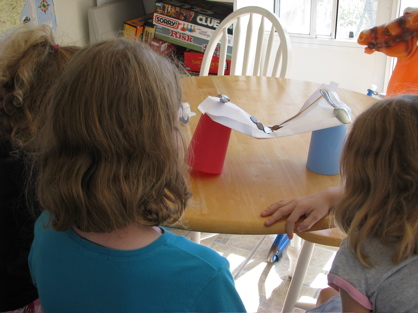This is the first year in seven years that my kids and I haven’t signed up for Project FeederWatch, a birdwatching-and-counting program sponsored by the Cornell Lab of Ornithology. In New York and Virginia, we spent every winter spying on chickadees and juncoes out our kitchen windows. In fact, when we moved to Virginia in January of 2002, the very first box I unpacked was the one marked BIRD FEEDERS.
This year, I figured we were too busy settling into the new California life (after all, at the time of that last move, there were just three tiny girls to keep track of), so I let the FeederWatch deadline come and go. Besides, our Eastern Birds poster won’t help us here in the land of scrub jays and parrots.

But I woke up this morning missing the fun of our Counting Days, and I popped over to the FeederWatch site to see if it’s too late to join the project this year. Turns out you can sign up through February 28. And this year, it appears the good folks at Cornell Lab have tumbled to watch a fantastic match Project FeederWatch is with homeschoolers. They now have a whole page devoted to the connection.
Your $15 registration fee gets you a nice little package of materials:
- Welcome Letter
- Instruction Booklet
- FeederWatcher’s Handbook, full of information on birds and bird feeding
- Full-color poster of common feeder birds with paintings by noted bird artist, Larry McQueen
- Bird Watching Days Calendar, to help you keep track of your Count Days
- Data forms—ten Count Forms for your region, one for each Count Period, and one Count Site Description Form
- Envelope for returning data forms to FeederWatch
(You can also eschew the paper data forms and submit your data online instead. You’ll still get the handbook, poster, and calendar.)
Like Journey North, this project is a wonderful way to bring living science (not to mention math!) into your home and homeschool.





